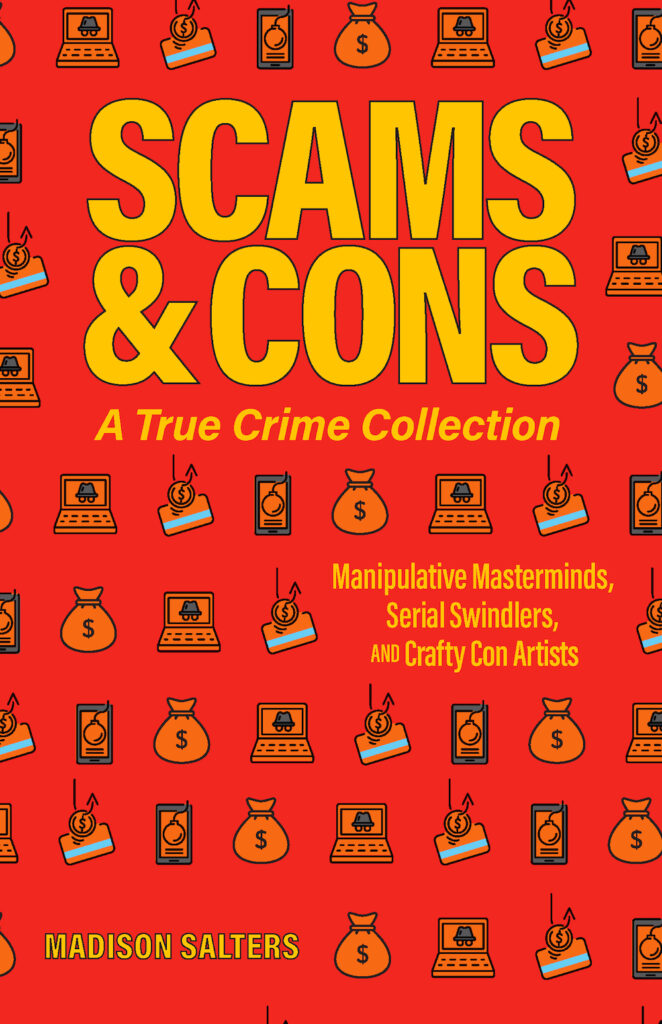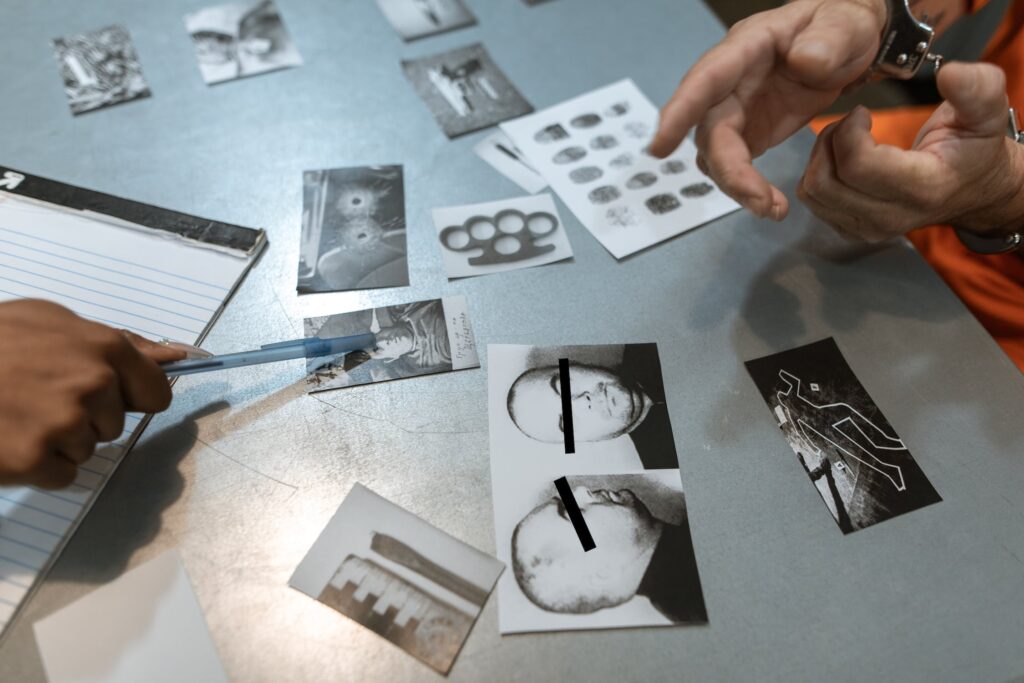
Famous Grifters: Your Guide to Scam Stories
- Book Sample /
- True Crime

If you’re still in your true crime era but are looking for something a little less, let’s say, murder-y, then turn your morbid fascination to scammers and con artists. There is no shortage of famous grifters who steal, lie, and cheat to get what they want. In Scams & Cons, Madison Salters covers the most scandalous stories surrounding criminals who charmed and conned their way into infamy. These truly shocking stories might even teach you a lesson or two on how you can lower your risk of becoming a victim of deception and fraud.
Featuring eight cases (including Simon Leviev, Jon Edward Robinson, and Elizabeth Holmes!), Scams & Cons will prove to you that grifters, scammers, and con artists are as important to the true crime community as unsolved mysteries and serial killers. Check out a brief excerpt below, and don’t forget to grab a copy of Madison’s book for more scandalous stories!
The Connection Between Scammers
I was unprepared for how many random and outrageous side-stories would be uncovered throughout this book’s fact-finding.
In almost every scammer’s saga, I was bound to find more like them—the same pots of honey attracted the same flies: wealth and power, fine schools, high fashion, romantic trysts, and online anonymity. Again and again as I went through the list of cases for this book, I was astounded by a kindred cast of characters materializing from the fog as I pried open each individual’s timeline.
What I came to accept is that con artists are like a photo negative: all dynamism, no contrasting thoughts allowed. They often aggrandize themselves with such intensity that they leave the people they meet with the shadowy impression that everything they said was true. The main shapes in their story may be tangible, but upon inspection, they’re off-color; the quality is eerily unreal. They’ll lighten up the darkest bits. So investigating them meant finding the original film, so to speak, and attempting to extract the reality. That often meant not asking “what happened?” but “is this possible, and if so, how?”
“They were so nice,” was a line I heard a lot, in interviews.

What Do All Famous Grifters Have In Common?
Fraudsters
Fraudsters are masters of social engineering. They know how to position themselves in the right place at the right time to take advantage of a situation. They don’t necessarily have to be clever, talented, or even particularly adept—they just have to catch you at a moment when you are not adept.
For anyone who has had a mobile phone or credit card number stolen and kicked themselves afterward, it’s not a difficult concept to swallow. For anyone who was an “A” student in one class, but dreaded being called upon in another, it’s again this common category in which we are not our best selves all the time.
Swindlers
Swindlers also tend to cast a wide net—the most successful ones often have multiple scams running. Something always sticks, sooner or later. “Bulk scams” are the norm. Think of the Nigerian “prince’s” email asking for a wire transfer; the text message you get from a bank you’re not a customer of; the prerecorded phone call from a computer that wants to talk about your car’s limited warranty; or catfishing over social media.
Scammers
Scam artists create rags-to-riches stories that tempt our imaginations. They highlight the inaccessibility in society; you almost root for them when they sneak into spaces meant only for elites. And they’re almost always in control of their own narratives—that part is important.
But what was most common of all, I think, was the inherent narcissism across these personalities—both sides of narcissism, the aggressive and the childlike. The side that puts one at the center of their own universe to the exclusion of all other’s wants, needs, and feelings and the self that in so doing feels extremely isolated there. They need a human supply to heap praise upon them, their glittering egos sustained on the backs of others’ companionship and work.

What Makes Them So Fascinating?
Unlike their marks, con artists haven’t been victimized. They can take a situation where they were the villain, smooth out its edges, and lob it back at reporters, juries, and audiences as a well-written, well-spoken, flawlessly rehearsed retelling—all from the angle they would like you to consider it from, please and thank you. They come across as self-possessed; they make eye contact, smile, laugh, joke. Their fictions are presented irrevocably as fact. They charismatically lure people into the gravity of their unique voices, tones, and mannerisms, dominating accounts.
For police, it’s difficult to stop them. They can’t retroactively give victims back their time, money, jobs, homes, or reputations; they can only “stop the bleeding.”
To be a scammer is to be afraid of living with that true self, to be afraid of letting anyone get close enough, but while also wanting, desperately, to be known. To be admired, but on false pretenses. To be unable to share how clever they are. It is to victimize others in the near-futile attempt to grasp at something that feels like it is enough.
***
Purchase a copy of Scams & Cons to dive deep into the the wild world of scammers, con artists and swindlers.






